Search Images
Browse Content (p. 898)
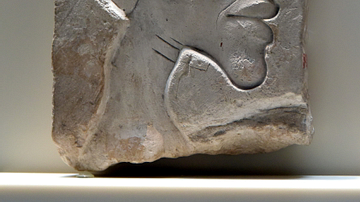
Image
Portrait of Akhenaten
Limestone fragment showing a portrait (in Amarna style) of the Egyptian pharaoh Akhenaten (r. 1353-1336 BCE) in profile, looking to the right. Probably from Amarna, Egypt. New Kingdom, 18th Dynasty, c. 1345 BCE. It is on display at the Neues...
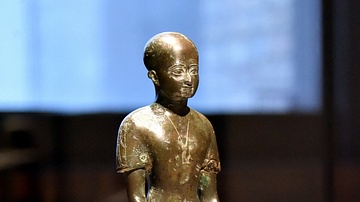
Image
Statue of Khonsumeb
Praying statue of Khonsumeb, God's father of Khonsu. Bronze, once decorated with precious stones. Third Intermediate Period, 22nd to 24th Dynasties, 945-714 BCE. (The Neues Museum, Berlin, Germany).
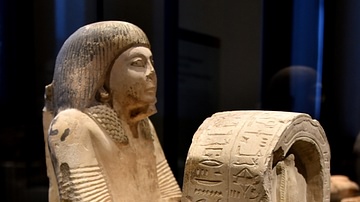
Image
Statue of Setau
Kneeling figure of Setau, Viceroy of Kush, holding a stela (stelophor).Limestone. New Kingdom, 19th Dynasty, reign of Ramesses II, 1279-1213 BCE. Probably from Abydos, Egypt. (The Neues Museum, Berlin, Germany).

Image
Statue of Nakht-Hor-heb
Kneeling figure of Nakht-Hor-heb, a military official, holding a shrine. Siltstone. Late Period, 26th Dynasty, reign of Amasis II, 570-526 BCE. From Sais (Sa El Hagar), Egypt Acquired by the Society for the Promotion of the Egyptian Museum...
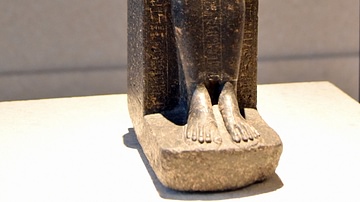
Image
Statue of Governor Mentuemhat
Seated statue of Menuemhat. He was the governor of the District of Thebes. Granite. 25th/26th Dynasties, 690-610 BCE. From Karnak, Thebes, Egypt. (The Neues Museum, Berlin, Germany).
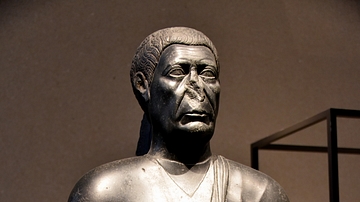
Image
Statue of Hor-sa-Tutu
The upper part of the statue of Hor-sa-Tutu has survived. He was the commander-in-chief of the troops in Lower Egypt. From Sais (Sa El Hagar), Egypt. Ptolemaic Period, 150-50 BCE. (The Neues Museum, Berlin, Germany).
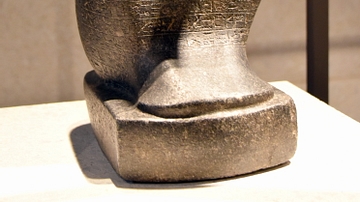
Image
Block Statue of Harwa
Block statue of Harwa, chief steward of the God's Wife Amenirdis. Diorite. Third Intermediate Period, 25th Dynasty (Nubian Dynasty), c. 740 BCE, From Grave 37, Western Thebes, Egypt. (The Neues Museum, Berlin, Germany).
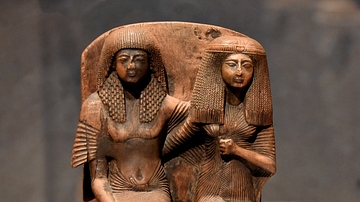
Image
Seated Figure of Amenemope
Amenemope was a royal scribe. He sits on a claw-footed chair with his wife, Hathor, who is seated on a low stool (on a pillow). They embrace each other. Painted wood. From Tomb 265 (TT265) at Deir el-Madina, Western Thebes, Egypt. New Kingdom...
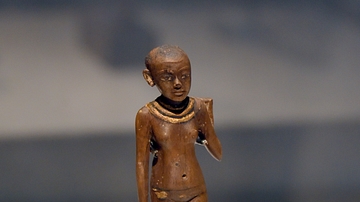
Image
Funerary Figurine of a Servant
This statuette is made of wood, as a piece of funerary equipment, and depicts a female servant. New Kingdom, 18th Dynasty, reign of Amenhotep III, 1388-1351 BCE. Probably from Thebes, Egypt. (The Neues Museum, Berlin, Germany).
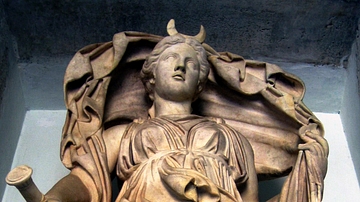
Image
Roman Statue of Luna
An early Imperial (1st Century BCE - 1st Century CE) statue of Luna, the Roman goddess of the moon. The statue is a Roman copy of a 4th Century BCE Greek statue of Selene, Luna's Greek counterpart. The goddess is portrayed wearing a billowing...